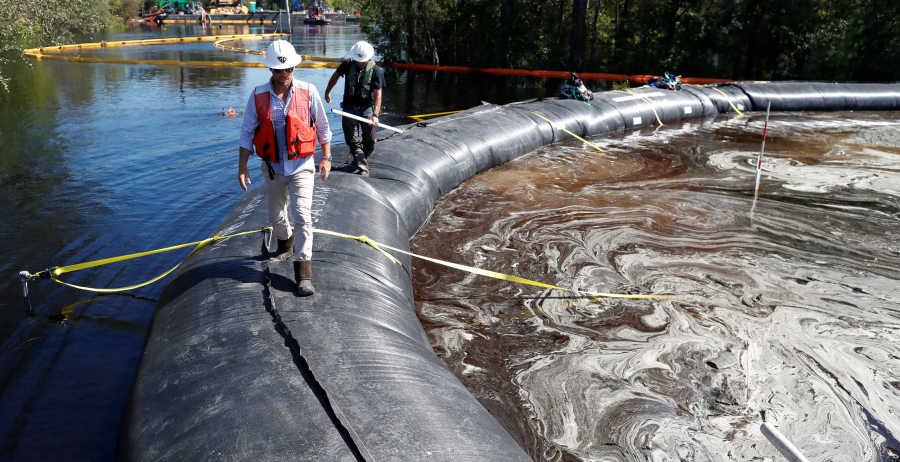
Pollution in South Carolina is a serious issue in the state. A greater number of people are killed in the US each year by drinking contaminated water than by all acts of war and terrorism put together.
However we have a shortage of potable water: According to estimates, access to less than one percent of the world’s freshwater supply is a major problem. The predicted global demand for freshwater is expected to be one-third higher than it is currently, making it that much more difficult to overcome the issues if nothing is done.
What Causes And Contributes To South Carolina’s Water Pollution Problem
As a very permeable medium, water is especially vulnerable to pollution. More chemicals can be dissolved in water than in any other liquid on Earth, earning it the moniker “universal solvent.” This is the scientific explanation for both Kool-Aid and bright blue waterfalls.
It’s also a contributing factor to water’s susceptibility to contamination. Water contamination occurs when harmful substances from farms, cities, and industry mix with water and get dissolved.
Typical Sources of Water Contamination in South Carolina’s Wastewater Treatment Facilities
Consumed Water Is Considered Waste water. It comes from domestic plumbing fixtures like bathtubs, sinks, and toilets, and from commercial, agriculture, and industrial operations. Rainfall washing away impermeable surface and into our rivers is known as stormwater runoff, and it includes the discharge of road salts, oil, chemical, grease, and debris.
The United Nations estimates that more than ten percent of wastewater worldwide is released into the environment without being treated or reused; in some underdeveloped countries, this number is as high as ninety-five percent. Each day, wastewater treatment plants in the United States process about 34 billion gallons of wastewater. Sewage pre-treatment plants reduce the concentration of pathogens, nitrates, and phosphates in the water supply, as well as the concentration of heavy metals and hazardous compounds in industrial waste, before discharging the water into nearby bodies of water.
The Environmental Protection Agency estimates that approximately 850 billion liters of untreated wastewater are discharged annually from the United States’ ageing and easily overwhelmed sewage treatment facilities.
Does Oil Harm Water Quality
The media focuses on massive oil spills, yet daily leaks from cars damage many seas and lakes. The majority of the estimated one billion million tonnes of oil which enters marine environments annually does not come from tanker mishaps but rather from land-based source like businesses, farms, and towns. Tanker accidents account for 10% of all oil lost at sea, while other marine operations (both legal and illegal) account for the other 30%. Also known as “seeps,” these fractures can be found on the ocean floor and are a common entry point for oil.
About a third of a oil in the ocean comes from the ordinary operations of the maritime industry (including both legal and illegal discharges), while the remaining 10% comes from tanker mishaps. Oil can also be released naturally through seeps, which are cracks in the ocean floor through which petroleum can seep.
Nuclear Materials
Radioactive waste refers to any type of pollution that releases radioactive particles at a rate greater than that of the surrounding environment in South Carolina. Uranium mining and nuclear power plants are two of the most damaging industries, alongside the production and testing of weapons and medical facilities that use radioactive elements in diagnostics and treatment.
Radioactive waste has an extremely long half-life in the environment (up to a thousand years), making it difficult to safely dispose of. Toxins that have been inadvertently released or improperly disposed of represent a threat to surface water, groundwater, and marine areas.
The Effects Of Polluting Water
There were 1.8 million deaths attributed, per studies published in The Lancet. Contaminated water is another potential source of illness. More than a billion people are ill each year because of water contamination. Additionally, low-income communities in South Carolina such as Rock Hill are disproportionately at risk because their homes are typically situated near polluting businesses.
According to the Environmental Defence Fund, the recent lead contamination tragedy in South Carolina is giving locals a first hand look at the potential dangers of chemical and other industrial contaminants in their drinking water.
The problem isn’t only limited to Rock Hill, and it’s not just lead; there are many different kinds of chemical contaminants that are making their way to public water systems, from pesticides to nitrate fertilisers. When ingested, these substances can cause everything from hormone imbalances to cancer. Infection is especially dangerous for young children and pregnant women.
The health of a person can be jeopardised by even swimming. The Environmental Protection Agency estimates that annually 3.5 million people in the United States get illnesses like rashes, pinkeye, lung infections, and hepatitis after swimming in coastal waters that have been contaminated by sewage.
